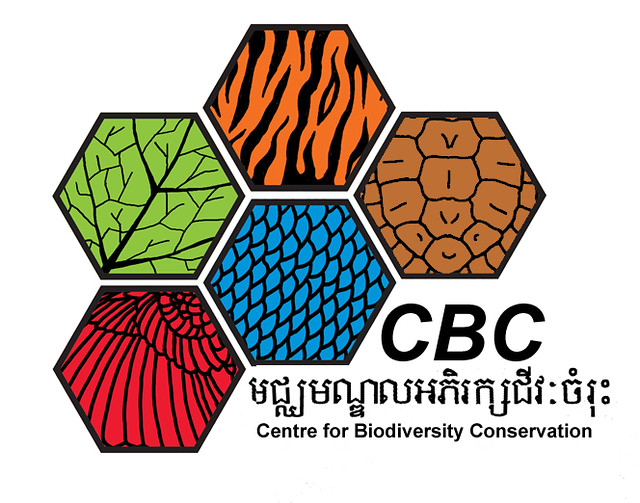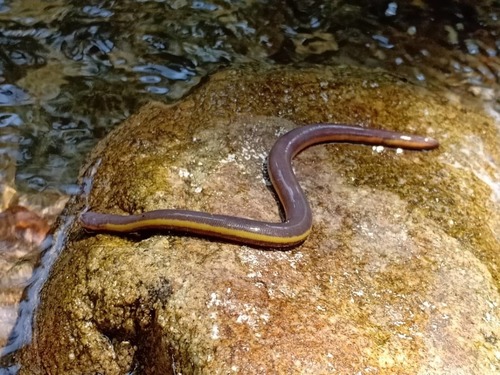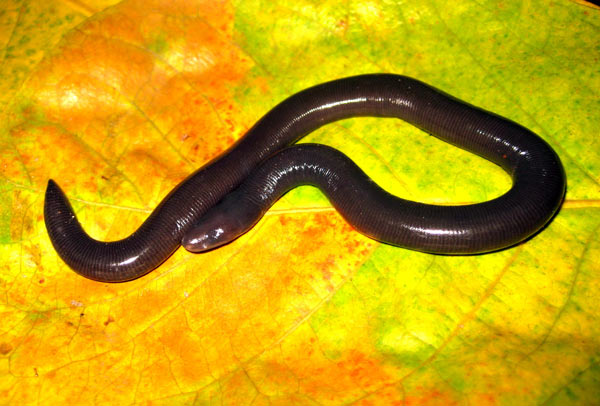The new species, Ichthyophis cardamomensis, is a caecilian, an order of limbless amphibians often mistaken for snakes, with larger species known to grow to 1.5 metres in length. This discovery, at only 30 cm, is linked to the continuing ground-breaking work at the Centre for Biodiversity Conservation (CBC) in Phnom Penh.
The Centre for Biodiversity Conservation is a joint venture between Fauna & Flora International (FFI) and the Royal University of Phnom Penh (RUPP). The CBC arose out of FFI’s University Capacity Building Project (UCBP) which was established to help overcome a chronic shortage of trained conservationists and reliable biodiversity data in Cambodia.

A national hub for postgraduate education, original biodiversity research, information dissemination and inter-agency collaboration; the CBC provides essential knowledge, skills and experience in contemporary conservation biology and natural resource management. The CBC delivers a two year Masters of Science in Biodiversity Conservation degree which was established in 2005. So far 41 students have completed the course and 21 are currently enrolled. The majority of graduates now work in Cambodia’s environment sector.
In 2007 the UCBP established an animal museum at the RUPP, adjacent to the new National Herbarium of Cambodia. The two collections are an important step in reversing the historical pattern of Cambodian biological material being lodged in western institutions, which few Cambodian scholars can readily visit.
Cambodia’s first peer-reviewed scientific periodical, the Cambodian Journal of Natural History (CJNH) was launched in 2008 by the CBC. Aimed at helping Cambodian scientists share their findings and improve their writing skills, the CJNH addresses the need for information on the conservation status and management requirements of Cambodian biodiversity.

In 2009, the CBC established an initiative to assist Cambodian scholars to undertake original research on contemporary scientific and conservation questions. The studies were undertaken by CBC staff frequently emphasize lesser-known taxa, and the initiative assists its scholars to secure financial support for doctoral studies and applied research projects. Whilst the CBC continues to grow FFI is looking for opportunities to replicate elements of the project in other south-east Asian countries.
The leading Cambodian FFI herpetologist of the team is Neang Thy. He has been researching amphibians and reptiles since 2003 and is very excited that the I. cardamomensis species has been officially confirmed. This discovery is one of three new species of unstriped Ichthyophis caecilians (the other two were found in Vietnam) introduced in the ‘New Ichthyophis species from Indochina’ paper published recently in the Organisms Diversity & Evolution scientific journal (published by the Society for Biological Systematics).

“These discoveries are important to demonstrate that much of Cambodia’s biodiversity remains unknown and unstudied by science, and many more areas need to be searched,” Thy said.
Caecilians are a difficult group to describe as they look so similar, and there are few caecilian experts, so comprehensive morphological and molecular (DNA) analyses are needed to recognize a new species. Zoologist Dr Peter Geissler said caecilians of the genus Ichthyophis were some of the most poorly known amphibian taxa within Southeast Asia.

Caecilians are best described as snake or worm-like amphibians that lack limbs. They have the typical amphibian skin that clearly differs from snakes, and they have skull and bones which differs from worms.
According to researchgate.net and fauna-flora.org












